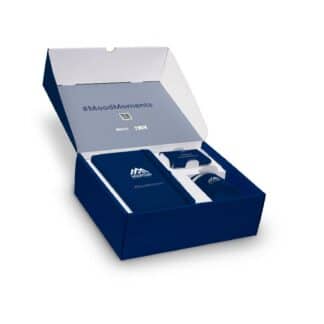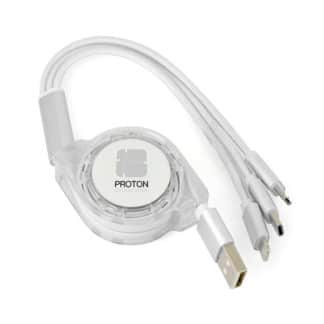Frequently Asked Questions
What are the benefits of being a BPMA Member?
Established in 1965, the BPMA is one of the UK’s leading industry bodies, dedicated to promoting best practice around the sourcing, manufacturing and distribution of promotional products. The BPMA logo stands for quality, professionalism and credibility within the industry in which we operate – factors which we believe strongly influence the behaviour of our current customers and potential customers. Accredited members have traded within the promotional merchandise market for a minimum of 3 years and can provide financial accounts to prove they have traded in a commercially sustainable manner. With the award of Accredited Membership, Code customer’s can be certain that they are dealing with an established business, providing peace-of-mind and commercial security on any dealings and transactions.
What are embroidery printing techniques?
Embroidery creates an impression of quality & style ideal for staff uniforms, workwear, military crests, leavers hoodies etc. Excellent for heavier items such as polo shirts and sweatshirts.
Embroidery offers you a long lasting, professional finish at a very reasonable price. This is more subtle than printed t shirts in some cases, and suits the corporate market well, creating a quality club or business brand identity and branding staff uniforms and corporate workwear. Large designs can be expensive.
This is the application of embroidering a logo or design onto clothing, caps or bags using computerised embroidery machines.
There are two main parts to this process. The first part is ‘Digitizing’ which is when the logo is turned into stitches by physically tracing the design and creating the various types of stitches on a computer programme which will recreate the design. The digitizer will decide the best way for the design to be sewn onto the fabric, and will make decisions according to the fabric type and design size. Once the design has been digitized a disk is made which controls the embroidery machines. Now the design is ready for part two. This is the sewing process; firstly the disk is sampled on a loose piece of fabric to ensure that the quality is good and that there are no errors in the digitizing. Once the sample has been approved production can commence.
Some designs may need to be modified before they can be embroidered successfully. Small text below 4-5mm may need enlarging slightly and designs with very fine detail may require editing in order to achieve the best overall look.
What are screen printing techniques?
Screen printing is the traditional printing method for t-shirts and is ideal for large designs. Screen printing is the process of creating a stencil of a design, placing it in a silk mesh screen, then using a squeegee or roller to push the inks through the mesh onto the garment and t shirt. A different screen is used for each colour in the t shirt design; once all the colours come together the result is a high quality, durable, fantastic looking printed garment or t shirt. T shirt screen printing is perfect for large garment designs
Screens are made by putting a chemical emulsion on a mesh surface. Vector artwork is taken from Adobe Illustrator or Corel Draw and printed out on a film type paper or vellum. The screen is then exposed on a light table with the artwork under it. The light solidifies the chemicals around the design, and where the light failed to pass through, the chemical breaks down. The screen is then rinsed out and what is left is the area where the light hit.
The shirt is placed on a platen and each screen swings around over the top of the shirt. The screen is then brought down and placed on top of the shirt. A squeegee is then pulled over that screen’s ink colour which pushes the ink onto the shirt fabric. That screen is then lifted, carefully off of the shirt (if the shirt moves or is stretched, the next colour will be out of registration). The platen with the shirt is then moved under a flash unit where it dries. Upon curing, the shirt platen is brought back and the next colour screen is swung over the top of it.
When screen printing, one colour at a time is applied and therefore the cost will increase with each additional colour applied. Likewise a separate screen is required for each colour, and hence, screen charges may be uneconomical if only a smalll quantity of clothing is required.
When you place an order for screen printed clothing there are two charges:
Setup – The first is a setup charge which covers the cost of having the design made into a screen. This charge is ‘one off’ as the screen is stored for future use. Therefore, if you wanted to place another order in the future with the same design there would be no setup charge.
One screen is required for each different design, and different screens are required for each colour printed, and each different location of printing. For example, a one colour front and back print requires two screens if the design on the front is different to the design on the back.
Per Screen/Per Colour – The second charge is a ‘per screen’ charge which applies to each item that is customised. This charge basically covers the cost of labour, materials and our other manufacturing overheads. The per screen charge is directly based on the number of items to be printed with the same design and applies to each screen
What are transfer printing techniques?
Transfer printing is where we apply an image (printed on to specialised transfer material) to the fabric using a heat transfer press. Traditionally it is the most cost effective means of producing shorter runs of garments and for t shirt printing.
Transfer printing involves taking a high resolution image and printing the image onto commercial quality white transfer paper. Images can be printed in most formats including BMP,TIF, GIF, AI, Jpeg. The quality of the image produced is directly related to the quality of the image supplied so it is important to supply quality images. Once the image is on the transfer paper it is then taken and applied using a commercial heat press and silicone release paper to the item of clothing.
Transfer printing is a fast, low cost way of producing small quantities of printed t-shirts or printed clothing.
Industry News

Covid-19 Update: Our Current Status
As we all get to grips with lockdown it’s certainly not business as usual at the moment. Many if not all businesses across the UK

10 Promotional Products for Outdoor Events
Despite the British weather, these days, there are more opportunities than ever to get your business noticed at outdoor events, whether at festivals, shows, branded

How to Use Branded Umbrellas to Promote Your Company
Promotional umbrellas are a marketing staple. By their very nature, umbrellas offer a generous print area and a very visible branding opportunity. They also tend

7 Cheap Promotional Products on a Budget
If money is tight, it’s easy to convince yourself there’s no room in the budget for promotional products or branded gifts for clients. But here

Top 10 Executive Christmas Gifts for Clients
Executive ‘thank you’ gifts are always a great way of showing your appreciation to your top clients, and the festive period is the perfect time

Our Christmas Confectionery Range
Get ready and indulge this Christmas with our special 2019 winter range of promotional chocolates, sweets and confectionery. Branded Advent Calendars Branded advent calendars ensure




